https://www.amgasparin.wordpress.com
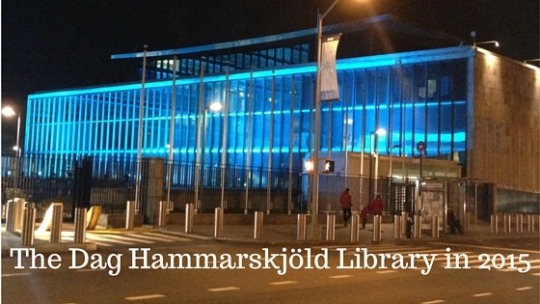
In 2015, the Dag Hammarskjöld Library continued to work hard to answer your information needs and make our resources more easily accessible. We are happy to support the work of the UN Secretariat and diplomatic missions to the UN.
Some of Our Accomplishments in 2015!
1. Bringing the latest news and research to UN staff around the world
The United Nations System Electronic Information Acquisition Consortium (UNSEIAC) brought some 70 electronic information sources to over 85,000 United Nations staff working around the world. UNSEIAC subscribes to electronic information for 57 different United Nations departments, offices, funds and programmes - negotiating discounts, cutting back on the duplication of administrative tasks, and helping UN staff access the information they need.
2. Making documents of the UN digitally available
The Library digitized 17,000 documents or 570,000 pages in 2015! Among the digitized documents, some highlighted series were the UN Charter in 45 languages, the Economic and Social Council (ECOSOC) Official Records in English, and the General Assembly Official Record Annexes. Since the Dag Hammarskjöld Library and the UN Office in Geneva’s Library commenced digitization of important historic UN documents in 1998, a total of 380,000 documents or 5 million pages have been digitized.
3. Creating Multilingual Library Resources
The library continues to develop and expand our multilingual online services and resources. Some of our successes in 2015 include making The UN Documentation Research Guide available entirely inSpanish, and the Library’s Research Guide on the History of the drafting of the Universal Declaration on Human Rights was made available in French.
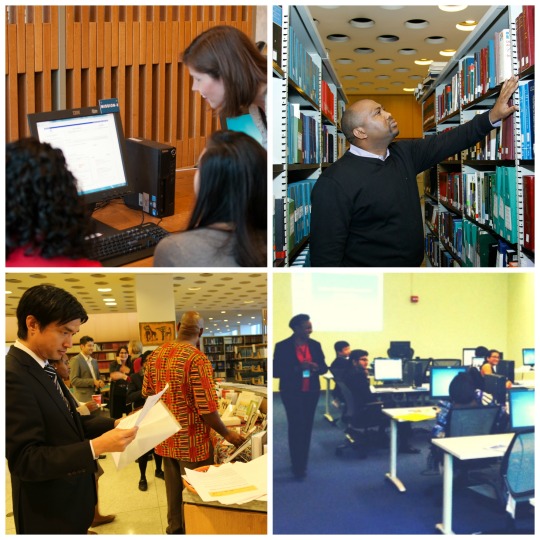
4. Our Training Programme Continues to Grow
We had almost 800 participants in our training classes this year and offered 75 training sessions. There are more training session to come in 2016 so check out our training calendar to see what we’re offering in the new year!
5. Inter-Library Loan Requests Increase
Our clients have been using DAG Discovery to find articles and books that are sometimes not in our collections. But that doesn’t stop the Library from fulfilling your needs! The Library has the ability to borrow books/journal articles from other partner libraries on behalf of our clients. This year we received more than 600 inter-library loan requests, a 50% increase from last year.
6. Celebrating the UN’s 70th Anniversary
The Library was proud to take part in celebrating the 70th anniversary of the United Nations by creating the online exhibit 70 Years, 70 Documents.
Over 1.6 million people have seen the exhibit and related content on the Dag Hammarskjöld Library website(40,000 views), on Library-branded social media channels (1.5 million views on Twitter & Facebook), and our Tumblr blog (60,000 views).
A Peek at 2016
Stay tuned for 2016 which promises to be an exciting year. We will launch the highly anticipated digital library as well as a brand new library website!
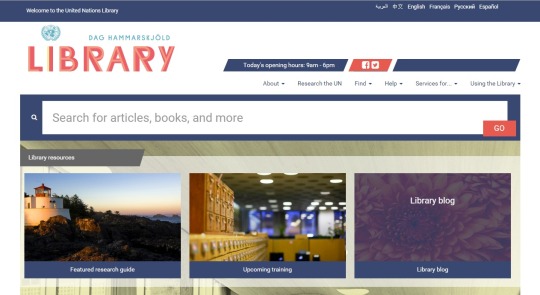
“Migration is an expression of the human aspiration for dignity, safety and a better future. It is part of the social fabric, part of our very make-up as a human family”
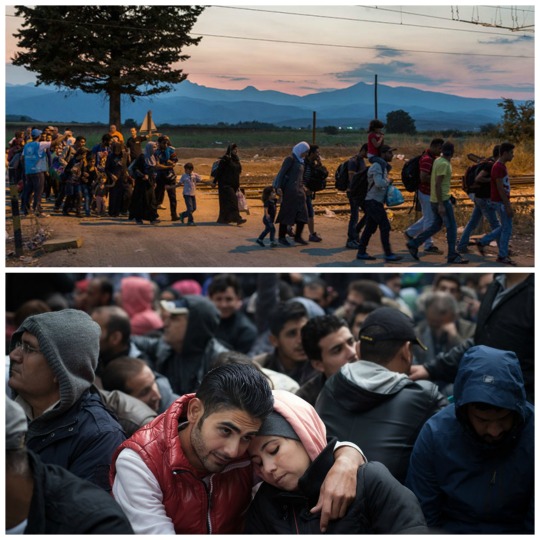
Top Photo: UNHCR/Ivor Pickett Bottom Photo: UNICEF/Ashley Gilbertson VII
On 4 December 2000, the General Assembly proclaimed 18 December International Migrants Day(A/RES/55/93). To help you learn more about the United Nations and the issue of migrants and migration, the Dag Hammarskjökd Library has compiled the following relevant resources.
International Law
The International Convention on the Protection of the Rights of All Migrant Workers and Members of Their Families, A/RES/45/158 was adopted by the General Assembly on 18 December 1990. Its primary objective is to protect migrant workers and their families, a particularly vulnerable population, from exploitation and the violation of their human rights.
2030 Agenda for Sustainable Development
The United Nations Sustainable Development Summit 2015′s outcome document “Transforming our world: the 2030 Agenda for Sustainable Development” declared “We recognize the positive contribution of migrants for inclusive growth and sustainable development” (para. 29). Migration-related targets were also included in UN’s post-2015 sustainable development goals.
Goal 8: Promote sustained, inclusive and sustainable economic growth, full and productive employment and decent work for allTarget 8.8: protect labour rights and promote safe and secure working environments of all workers, including migrant workers, particularly women migrants, and those in precarious employmentGoal 10: Reduce inequality within and among countriesTarget 10.7: Facilitate orderly, safe, regular and responsible migration and mobility of people, including through the implementation of planned and well-managed migration policies
General Assembly Actions
During the 70th session of the General Assembly’s General Debate, the Secretary-General convened a high-level side event on migration and refugee movements, Strengthening cooperation on migration and refugee movements in the perspective of the new development agenda.
There have been two High-Level Dialogues on International Migration and Development held by the General Assembly on 3-4 October 2013 and 14-15 September 2006.
Resolutions and reports of the General Assembly on migrants and migration are available online.
UN Agencies and Programmes
- The Office of the United Nations High Commissioner for Human Rights (OHCHR) - Migrants includes the Special Rapporteur on the human rights of migrants and Committee on Migrant Workers
- The Office of the United Nations High Commissioner for Refugees (UNHCR) - Asylum and Migration
- Department of Economic and Social Affairs - Population Division - International Migration
Other Resources
- Global Migration Group (GMG) - inter-agency group established by the United Nations Secretary-General in early 2006
- Global Forum on Migration and Development (GFMD) - United Nations Member States initiative
- International Organization for Migration (website) - UN-affiliated intergovernmental agency
Further Reading
This issue featured contributions from twelve leading experts from within and outside of the United Nations system, and looked at the topic of international migration and development.
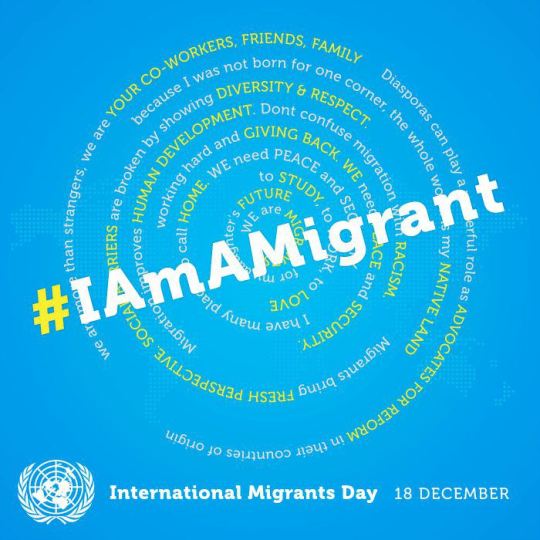
Youth, Security and Peace
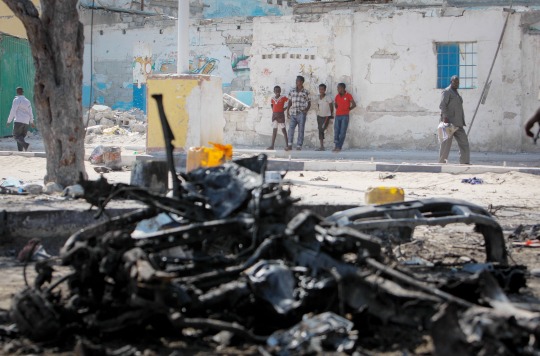
Young Somalis look on near the wreckage of a car bomb, 2013. (UN Photo/Stuart Price)
On 9 December 2015, the UN Security Council adopted resolution 2250 (2015) on youth, peace and security, which for the first time, focuses on the role of young men and women in peacebuilding and countering violent extremism.
The historic resolution urges Member States to consider ways to increase inclusive representation of youth in decision-making at all levels. It calls for “establishing integrated mechanisms” for meaningful participation of young people in formal peace processes and peacebuilding efforts, recognizing the marginalisation of youth is detrimental to building sustainable peace.
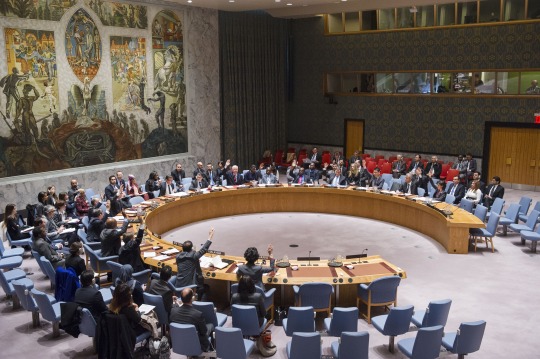
The Security Council unanimously adopts resolution 2250 (2015). (UN Photo/Amanda Voisard)
Path to Resolution
In April 2015, Jordan assumed the presidency of the Security Council and placed on the Council’s work programme an open debate focusing on “the role of youth in countering violent extremism and promoting peace”. The ministerial-level debate, chaired by Jordan’s Prince Hussein bin Abdullah, was held on 23 April. This was the first ever formal debate on the topic.
- Concept paper for the Security Council briefing on the theme “The role of youth in countering violent extremism and promoting peace” - S/2015/231
- Meeting Records - S/PV.7432
- Meeting Coverage - SC/11872
A Global Forum on Youth, Peace and Security, growing out of the thematic debate in the Security Council, was held the 21st and 22nd of August 2015. It was the first gathering of its kind, where young people, youth-led organizations, non-governmental organizations, governments and UN entities came together to agree on a common vision and roadmap to partner with young people in preventing conflict, countering violent extremism and building lasting peace.
- Global Forum on Youth, Peace and Security Final report
- Outcome Document - Amman Youth Declaration
Additional Resources on Youth and Peacekeeping
- Office of the Secretary-General’s Envoy on Youth
- The Guiding Principles on Young People’s Participation in Peacebuilding - The Guiding Principles are an effort by the United Nations and non-governmental organizations to promote youth as active stakeholders, participants, leaders and partners in peace processes.
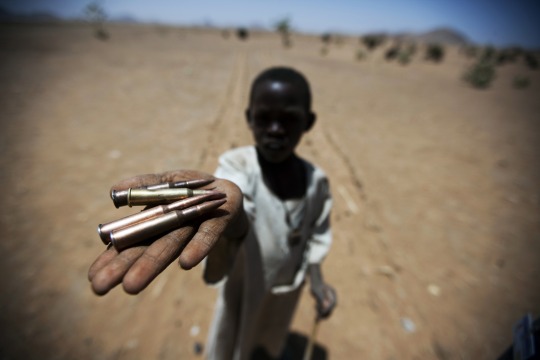
UN Photo/Albert González Farran
“…Genocide does not just happen; it unfolds over time”
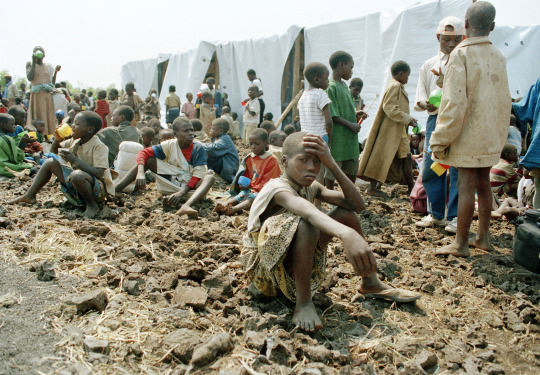
Rwandan children who had lost their parents rest at Ndosha camp in Goma, 1994 (UN Photo/John Isaac)
As the United Nations observes the first International Day of Commemoration and Dignity of the Victims of the Crime of Genocide and of the Prevention of this Crime, the Dag Hammarskjöld Library spotlights the work of theInternational Criminal Tribunal for Rwanda (ICTR), which completes its mandate 31 December 2015.
Overview of the ICTR
In the wake of the 1994 Rwandan genocide, the United Nations Security Council adopted resolution 955 (1994) on 8 November 1994. The resolution established “an international tribunal for the sole purpose of prosecuting persons responsible for genocide and other serious violations of international humanitarian law committed in the territory of Rwanda and Rwandan citizens responsible for genocide and other such violations committed in the territory of neighbouring States, between 1 January 1994 and 31 December 1994.”
The International Criminal Tribunal for Rwanda (ICTR) was the first international court of law established to prosecute high-ranking individuals for massive human rights violations in Africa. Since it opened in 1995, the Tribunal has indicted 93 individuals.
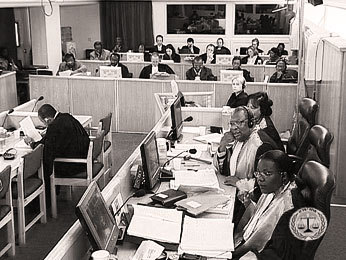
Court hearing during the “Butare case”. (ICTR Photo)
Records and Archives of the ICTR
The Mechanism for International Criminal Tribunals (the MICT) was established by the Security Council on 22 December 2010 to carry out a number of essential functions of the International Criminal Tribunal for Rwanda (ICTR) and the International Criminal Tribunal for the former Yugoslavia (ICTY), after the completion of their respective mandates.
- The Judicial Records and Archives Database (JRAD) provides access to all MICT public judicial records, as well as to the public archive records of the ICTR. The collection is expanding on a regular basis. Records include filings from parties and non-parties to trials, exhibits tendered in court, as well as transcripts and audiovisual recordings of court hearings.
- The ICTR/ICTY/MICT Case Law Database contains extracts of judgements and decisions rendered by the Appeals Chambers of the ICTR since 2004.
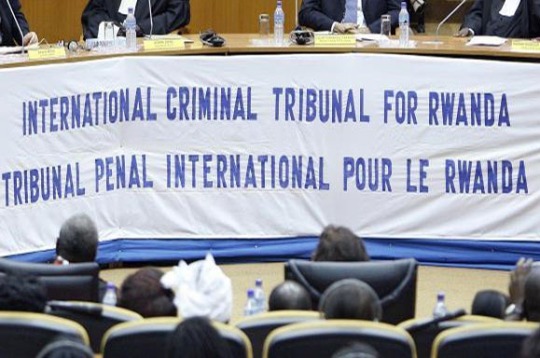
UN Photo/Mark Garten
Learn More
The Dag Hammarskjöld Library has many materials in its collection relating to the Rwandan Genocide and the ICTR.
UN offices and programmes include the Special Advisers on the Prevention of Genocide and on the Responsibility to Protect and The Outreach Programme on the Rwanda Genocide and the United Nations.
Act towards one another in a spirit of brotherhood
Since its establishment in 1945, one of the fundamental goals of the United Nations has been promoting and encouraging respect for human rights for all. In pursuit of this goal, the General Assembly, on 10 December 1948 adopted the Universal Declaration of Human Rights, A/RES/217 (III) .
We the peoples of the United Nations determined…to reaffirm faith in fundamental human rights, in the dignity and worth of the human person, in the equal rights of men and women and of nations large and small […]All human beings are born free and equal in dignity and rights. They are endowed with reason and conscience and should act towards one another in a spirit of brotherhood. (UN Charter)

An early draft version of the Universal Declaration of Human Rights (UN Photo/ Greg Kinch)
The proposal in resolution 217 grew to include two covenants, The International Covenant on Economic, Social and Cultural Rights and the International Covenant on Civil and Political Rights. Both were adopted by the General Assembly by its resolution 2200 A (XXI) of 16 December 1966.
The two Covenants, together with the Universal Declaration of Human Rights, form the International Bill of Human Rights, setting out the civil, political, cultural, economic, and social rights that are the birth right of all human beings.
On 10 December each year, the world celebrates Human Rights Day, commemorating the day in 1948 when the Universal Declaration of Human Rights was adopted. The General Assembly passed resolution 423 (V) on 4 December 1950, inviting all States and interested organizations to observe 10 December as Human Rights Day.
UN and Related Bodies
- High Commissioner for Human Rights (OHCHR)
- UN Human Rights Council
- General Assembly Third Committee (Social, Humanitarian and Cultural)
Library Research Guides and Resources
- Drafting of the Universal Declaration of Human Rights
- UN Documentation: Human Rights - also contains list of Library FAQs dealing with human rights
- 70 Years, 70 Documents - Universal Declaration of Human Rights
- UN Library blog on Universal Declaration of Human Rights
UN Audiovisual Library of International Law
- Universal Declaration of Human Rights
- International Covenant on Economic, Social and Cultural Rights
- International Covenant on Civil and Political Rights
Audio

Security Council Presidency : Did You Know?
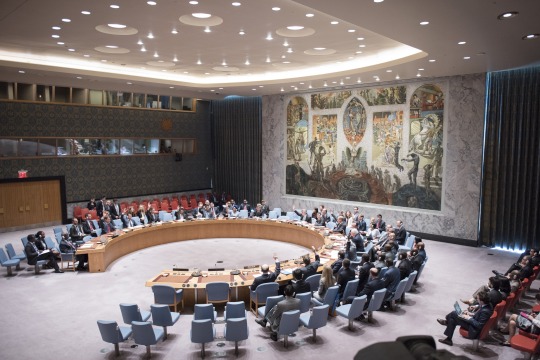
A view of Council members voting in favour of a draft resolution, October 2015. (UN Photo/Rick Bajornas)
The Security Council has a rotating presidency. Members take turns at holding the presidency of the Security Council for one month, following the English alphabetical order of the Member States names.
This December, the United States will hold the presidency of the Security Council.
Rules and Procedures on Presidency
- Provisional Rules of Procedure - Chapter IV : Presidency
- Repertoire of the Practice of the Security Council : Presidency
Library Resources
- The Member State that holds the presidency for the month issues a report entitled “Assessment of the work of the Security Council during the Presidency of [State] in [Month]”. These reports can be retrieved from theLibrary Catalog (UNBISnet).
- UN Documentation : Security Council
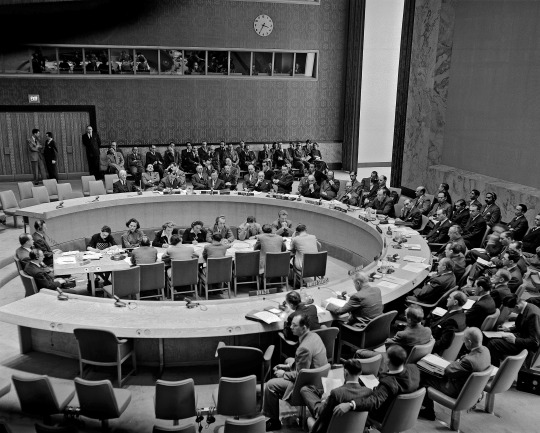
First Security Council Session at UN Headquarters, 1952 (UN Photo/MB).
A Timeline of UN Action on HIV/AIDS
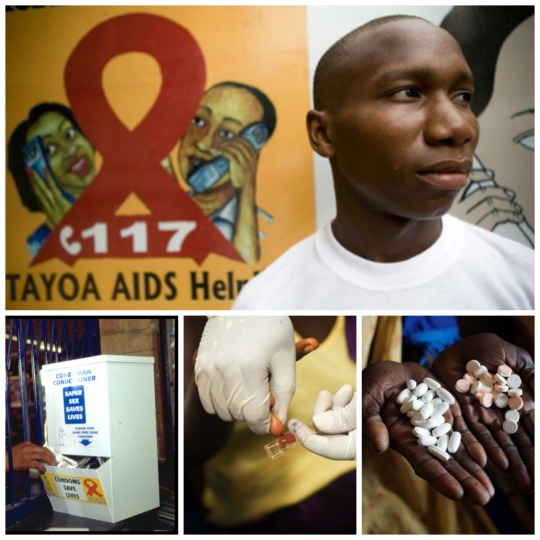
A young man stands near an AIDS help-line poster in Tanzania/Free condoms from a dispenser at a bar in South Africa/HIV blood test being administered at a hospital in Sierra Leone/ A patient in South Sudan holding her anti-retroviral drugs.(UNAIDS;UN Photo/Louise Gubb;UNDP/Brian Sokol)
In June 1981, scientists in the United States reported the first clinical evidence of a disease that would later become known as acquired immunodeficiency syndrome or AIDS. The United Nations is committed to a wide range of activities and initiatives around the world in the battle against HIV and AIDS.
Selected Highlights of UN Action on HIV/AIDS
- 1985 The U.S. Department of Health and Human Services and the World Health Organization (WHO) host the first International AIDS Conference in Atlanta, Georgia
- 1987 February WHO launches the Global Program on AIDS
- 1987 October AIDS becomes the first disease ever debated on the floor of General Assembly. A/42/PV.44, A/42/PV.45, A/42/PV.48, A/RES/42/8
- 1988 WHO declares declares 1 December to be World AIDS Day. The General Assembly officially recognizes the day with A/RES/43/15
- 1994 The UN Economic and Social Council (ECOSOC) passes resolution 1994/24 endorsing the establishment of a Joint United Nations Programme on HIV/AIDS, which will be know as UNAIDS
- 1996 UNAIDS becomes fully operational on 1 January, coordinating the main UN agencies involved with HIV/AIDS and combining the knowledge of its cosponsoring bodies
- 1998 UNAIDS and the Office of the Commissioner for Human Rights (OHCHR) publish the International Guidelines on HIV/AIDS and Human Rights as a tool for States in designing, coordinating and implementing effective national HIV/AIDS policies and strategies
- 2000 July The UN Security Council meets to discuss the impact of AIDS on peace and security in Africa, the first time that the council discusses a health issue as a threat to peace and security. Security Council Resolution 1308 (2000) on HIV/AIDS and International Peacekeeping Operations is adopted on 17 July
- 2000 September World leaders meet for the UN Millennium Summit and adopt the United Nations Millennium Declaration. The Declaration sets out a series of time-bound targets known as the Millennium Development Goals (MDGs). Goal 6 focuses on stopping and reversing the spread of HIV/AIDS
- 2001 The General Assembly holds a Special Session on the Problem of human immunodeficiency virus/acquired immunodeficiency syndrome (HIV/AIDS) in all its aspects. The Declaration of Commitment on HIV/AIDS “Global Crisis – Global Action”, A/RES/S-26/2 is adopted on 27 June
- 2006 The General Assembly High-Level Meeting on HIV/AIDS adopts a 53-point Political Declaration, A/RES/60/62 on the way towards universal access to HIV prevention, treatment, care and support services
- 2011 June World leaders gather in New York for the General Assembly High Level Meeting on AIDS.A/RES/65/277, Political Declaration on HIV/AIDS: Intensifying our Efforts to Eliminate HIV/AIDS is adopted
- 2011 June The Security Council passes S/RES/1983 (2011) on the impacts of HIV/AIDS epidemic in conflict and post-conflict situations
- 2015 Transforming our world: the 2030 Agenda for Sustainable Development, adopted by the General Assembly in September, outlines new sustainable development goals including SD3 . SD3 targets ending the epidemics of AIDS, tuberculosis, malaria and neglected tropical diseases and combat hepatitis, water-borne diseases and other communicable diseases by 2030.
UN Agencies and Programmes

A child is born stateless at least every 10 minutes

Children in Telipok, Sabah, Malaysia. Born stateless, this baby acquired nationality in 2008 in Bangladesh.(UNHCR Photos/ Greg Constantine/ G.M.B. Akash)
Lead UN Agency on Refugees and Statelessness
The Office of the United Nations High Commissioner for Refugees (UNHCR) was established by the General Assembly in 1950 with the adoption of A/RES/428(V). Through a series of resolutions beginning in 1994, the General Assembly gave UNHCR the formal mandate to prevent and reduce statelessness around the world, as well as to protect the rights of stateless people.
In November 2014, the UNHCR’s launched #IBelong, a 10-year campaign to eradicate statelessness by the year 2024 and published two key documents: A Special Report: Ending Statelessness Within 10 Years and The Global Action Plan to End Statelessness: 2014 – 2024.
A year later, the UNHCR releases the report, I Am Here, I Belong: The Urgent Need to End Childhood Statelessness.
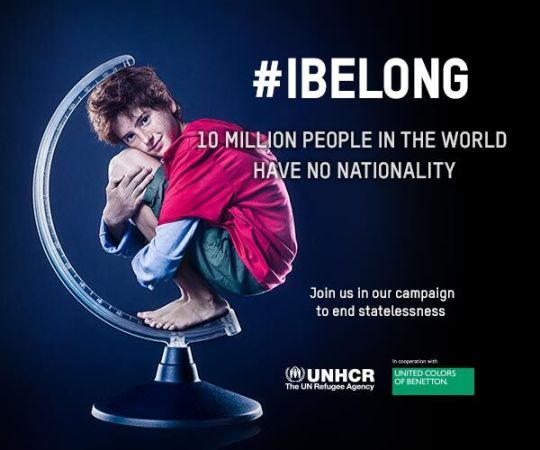
Key international conventions addressing statelessness
- 1954 Convention relating to the Status of Stateless Persons
The Convention relating to the Status of Stateless Persons was adopted on 28 September 1954 and entered into force on 6 June 1960. It establishes a framework for the international protection of stateless persons… The 1954 Convention’s most significant contribution to international law is its definition of a “stateless person” as someone “who is not considered as a national by any State under operation of its law.” (UNHCR)
- 1961 Convention on the Reduction of Statelessness
The United Nations Conference on the Elimination or Reduction of Future Statelessness was held in Geneva 1959 and New York 1961. The conference produced the Convention on the Reduction of Statelessness, A/CONF.9/15. The Convention aims to prevent statelessness and thereby reduce it over time. It establishes an international framework to ensure the right of every person to a nationality and requires that states establish safeguards in their nationality laws to prevent statelessness at birth and later in life.
Library Resources
Global action on water and sanitation challenges
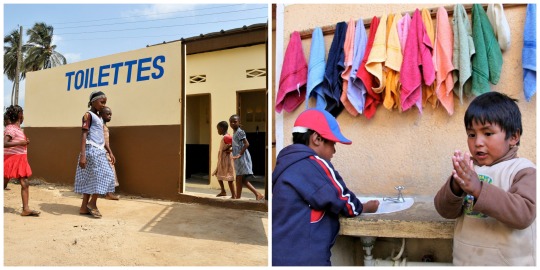
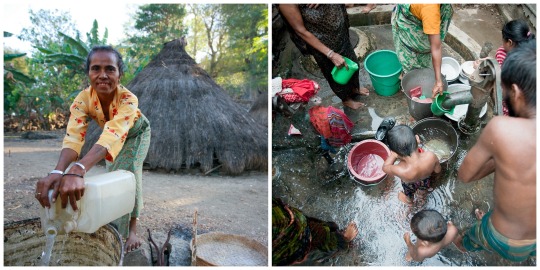
UN Photos/Patricia Esteve/ Martine Perret/Kibae Park; UNICEF/NYHQ2013-1499/Pirozzi
The UN High-Level Water and Sanitation Days 2015 are a set of coordinated events taking place from November 18 - 20 at UN Headquarters in New York. Participants will focus on the interconnected water-related Sustainable Development Goals targets which set forth a broad and ambitious vision for the next fifteen years.
Learn more with the our research guide: Water, sanitation and sustainable energy & the post-2015 development agenda
Selected Highlights of UN Actions on Water and Sanitation
- 1977 UN Water Conference held 14-25 March.The Conference is the first world intergovernmental meeting devoted to the crucial problem of ensuring adequate water supplies for the earth’s expanding population
- 1981-1990 is designated the International Drinking Water Supply and Sanitation Decade, A/RES/35/18
- 1990 Joint Monitoring Programme for Water Supply and Sanitation (JMP) launched to monitor progress of access to water-supply and sanitation services at the country level
- 1993 General Assembly declares March 22 of each year to be World Water Day, A/RES/47/193
- 2003 is the International Year of Freshwater, A/RES/55/196 and UN-Water was formalised to coordinate all freshwater and sanitation related matters in the UN system
- 2005-2015 is designated International Decade for Action, “Water for Life” (A/RES/58/217)
- 2008 is the International Year of Sanitation, A/RES/61/92
- 2000 Millennium Development Goal 7: Ensure Environmental Sustainability has the target of halving, by 2015, the proportion of the population without sustainable access to safe drinking water and basic sanitation
- 2010 General Assembly adopts A/RES/64/292, The human right to water and sanitation
- 2011 “Sustainable Sanitation: Five-Year Drive to 2015″ is launched
- 2013 is the International Year of Water Cooperation, A/RES/65/154
- 2013 The “Sanitation for All’ resolution, A/RES/67/291, is adopted by General Assembly, designating 19 November as World Toilet Day
- 2014 Thematic Debate of the General Assembly “Water, Sanitation and Sustainable Energy In the Post-2015 Development Agenda” is held
- 2014 End Open Defecation Campaign is launched to help end the practice of open defecation and improve access to toilets and latrines for people without basic level sanitation
- 2015 Transforming our world: the 2030 Agenda for Sustainable Development, adopted by the General Assembly in September, outlines new sustainable development goals including SDG 6: Ensure availability and sustainable management of water and sanitation for all.
UN Offices

The UN Climate Change Conference, known as COP21/CMP11, will be held in Paris from 30 November-11 December. There, the global community will seek long-term solutions to limit the global temperature to less than 2 degrees Celsius.
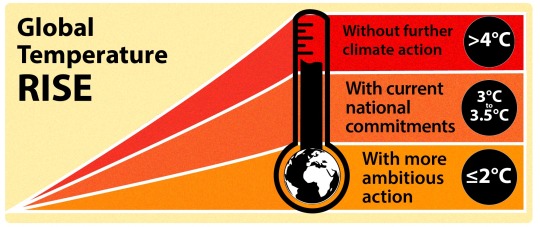
UN and Climate Change
In 1988, the General Assembly passed resolution 43/53, declaring climate change “a common concern of mankind” and establishing the Intergovernmental Panel on Climate Change.
The United Nations Framework Convention on Climate Change (UNFCCC) was adopted at the “Rio Earth Summit” in 1992. The UNFCCC is the primary international, intergovernmental forum for negotiating the global response to climate change.
The UN’s 2030 Agenda for Sustainable Development has Climate Action: "Take urgent action to combat climate change and its impacts” as Sustainable Development Goal 13.
Resources
UN Library Internship

Graduate students…
Interested in seeing the world of diplomacy and public policy as the staff of the Dag Hammarskjöld Library do?
Multiple internships are being offered in the Outreach Division of the Department of Public Information and you could work with us!
When applying, your cover letter should specify that the “Area of Interest/Department” you prefer working in is the Dag Hammarskjöld Library.
Current students in the following fields are encouraged to apply:
- Library and information science
- Computer science
- Archives
- Records management
Apply today!
Learn more about the United Nations Internship Programme.
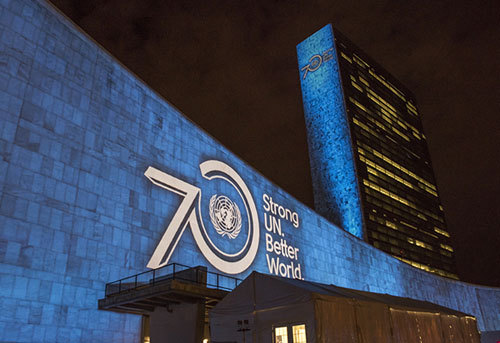
Digital UN Charter collection online for United Nations Day
The Dag Hammarskjöld Library is unveiling our digitized collection of over 30 different language editions of the UN Charters to celebrate United Nations Day.
Since 1948, the 24th of October has been celebrated as United Nations Day. UN Day marks the anniversary of the entry into force in 1945 of the UN Charter. With the Charter’s ratification the United Nations officially came into being.
Learn more about the UN Charter and UN Day
United Nations Day: (A/RES/168 (II) (A/RES/2782 (XXVI))
Women working for peace and security around the world (UN Photo/Emmanuel Tobey; UNIFIL Photo/Pasqual G. Marcos; UN Photo/Isaac Billy; UNAMID/Albert Gonzalez Farran).
Celebrating Security Council Resolution 1325 (2000)
We’ve created a new resource on the Security Council and women, peace & security to celebrate the 15th anniversary of the passage of resolution 1325 (2000)!
Resolution 1325 (2000) was the first to link women’s experiences of conflict to the international peace and security agenda. It focused on the disproportionate impact of conflict on women, and called for their engagement in conflict resolution and peacebuilding.

30 October 2000 - Security Council unanimously adopts resolution 1325 (2000), UN Photo/Milton Grant.


The history of the UN in 70 documents…
The votes are in!
You’ve selected the most important United Nations documents - one from each of 7 decades of UN history - from our online exhibit, ‘70 Years, 70 Documents’:
1946 - 1955: Universal Declaration of Human Rights (1948)
1956 - 1965: Declaration of the Rights of the Child (1959)
1996 - 2005: UN Millennium Declaration (2000)


2014 – The first-ever UN emergency health mission is created to battle a health crisis in West Africa

Ebola treatment unit (ETU) in N'zerekore, Guinea (UNMEER Photo/Martine Perret).
In response to the Ebola virus disease worsening and rapidly spreading in West Africa, Secretary-General Ban Ki-moon called for the creation of the first-ever UN emergency health mission, the UN Mission for Ebola Emergency Response (UNMEER). UNMEER was established on 19 September 2014 with the unanimous adoption of General Assembly resolution 69/1 and Security Council resolution 2177 (2014).
A temporary measure to meet immediate needs related to the unprecedented fight against Ebola, the Mission deployed financial, logistical and human resources to the targeted countries to support the push to zero cases. Having achieved its main objective of scaling up the response on the ground, and establishing cohesion among responders in support of nationally led efforts, UNMEER closed on 31 July 2015, passing oversight of the UN system’s Ebola emergency response to the World Health Organization (WHO).
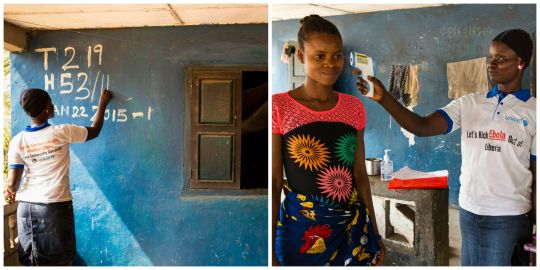
In Liberia, to keep track of households visited and schedule the next visit, the team writes details on house walls; the temparature of a resident is checked (UNMEER Photo/Martine Perret).
Learn More!
Watch the history of the United Nations unfold a document at a time at: 70 Years, 70 Documents: An Exhibit.

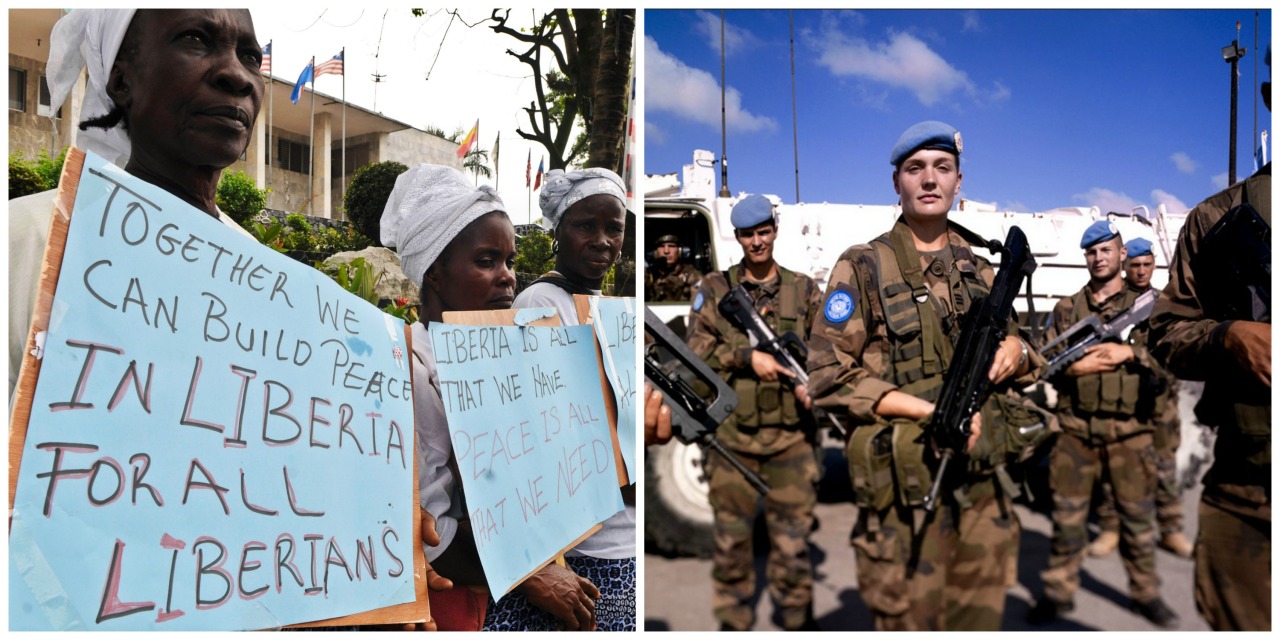
Nenhum comentário:
Postar um comentário